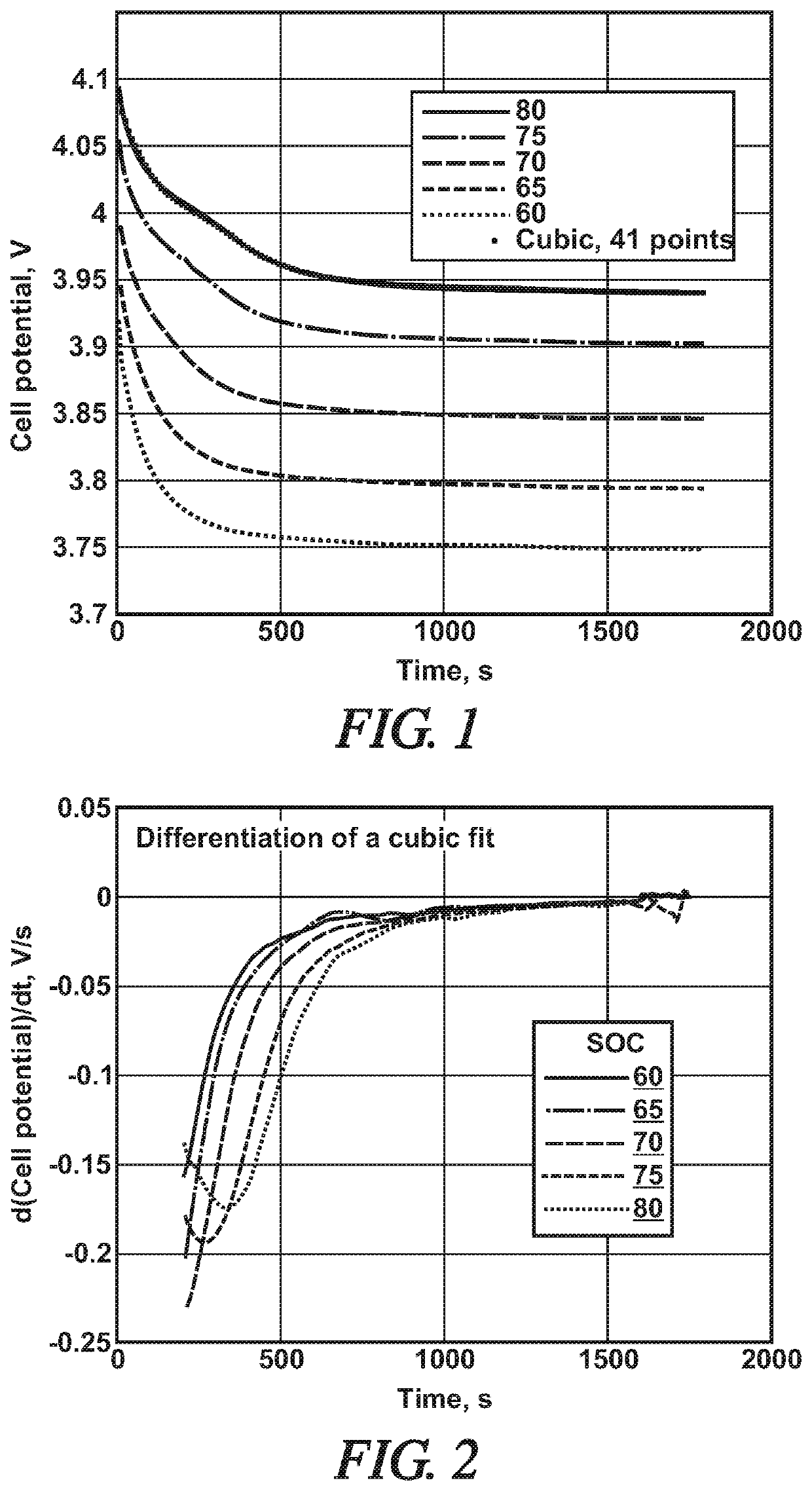On-vehicle algorithms to determine if lithium plating has occurred
a technology of lithium plating and on-vehicle algorithms, which is applied in secondary cell servicing/maintenance, batteries, instruments, etc., can solve the problems of not all the lithium entering the anode material is accommodated into the graphite particles, reduce the electrical capacity of the cell, and the reacted lithium product is no longer available to function in the cell, so as to improve the rate and efficiency of lithium intercalation
- Summary
- Abstract
- Description
- Claims
- Application Information
AI Technical Summary
Benefits of technology
Problems solved by technology
Method used
Image
Examples
Embodiment Construction
[0025]Lithium-ion batteries made for automotive applications may be characterized as modules that contain a plurality of individual cells, each cell, for example, comprising a graphite anode(s), negatively-charged during cell discharge, separated from a lithium compound cathode(s), positively-charged and contained in a polymer coated, metal foil-type battery pouch. Each cell has positive and negative extensions for serial or parallel electrical connections with other cells in a larger battery pack that is sized for a specific application based on its power requirements.
[0026]A battery management systems (BMS) may be used as an electronic controller in conjunction with a battery module or a group of battery modules. The BMS may include one or more computer devices, each having a processor and sufficient amounts of memory, for example, read only memory, random access memory, and electrically-erasable programmable read-only memory. Such computing devices are commercially available and ...
PUM
| Property | Measurement | Unit |
|---|---|---|
| open-circuit cell voltage | aaaaa | aaaaa |
| open-circuit voltage | aaaaa | aaaaa |
| voltage measurement | aaaaa | aaaaa |
Abstract
Description
Claims
Application Information
 Login to View More
Login to View More - R&D
- Intellectual Property
- Life Sciences
- Materials
- Tech Scout
- Unparalleled Data Quality
- Higher Quality Content
- 60% Fewer Hallucinations
Browse by: Latest US Patents, China's latest patents, Technical Efficacy Thesaurus, Application Domain, Technology Topic, Popular Technical Reports.
© 2025 PatSnap. All rights reserved.Legal|Privacy policy|Modern Slavery Act Transparency Statement|Sitemap|About US| Contact US: help@patsnap.com

